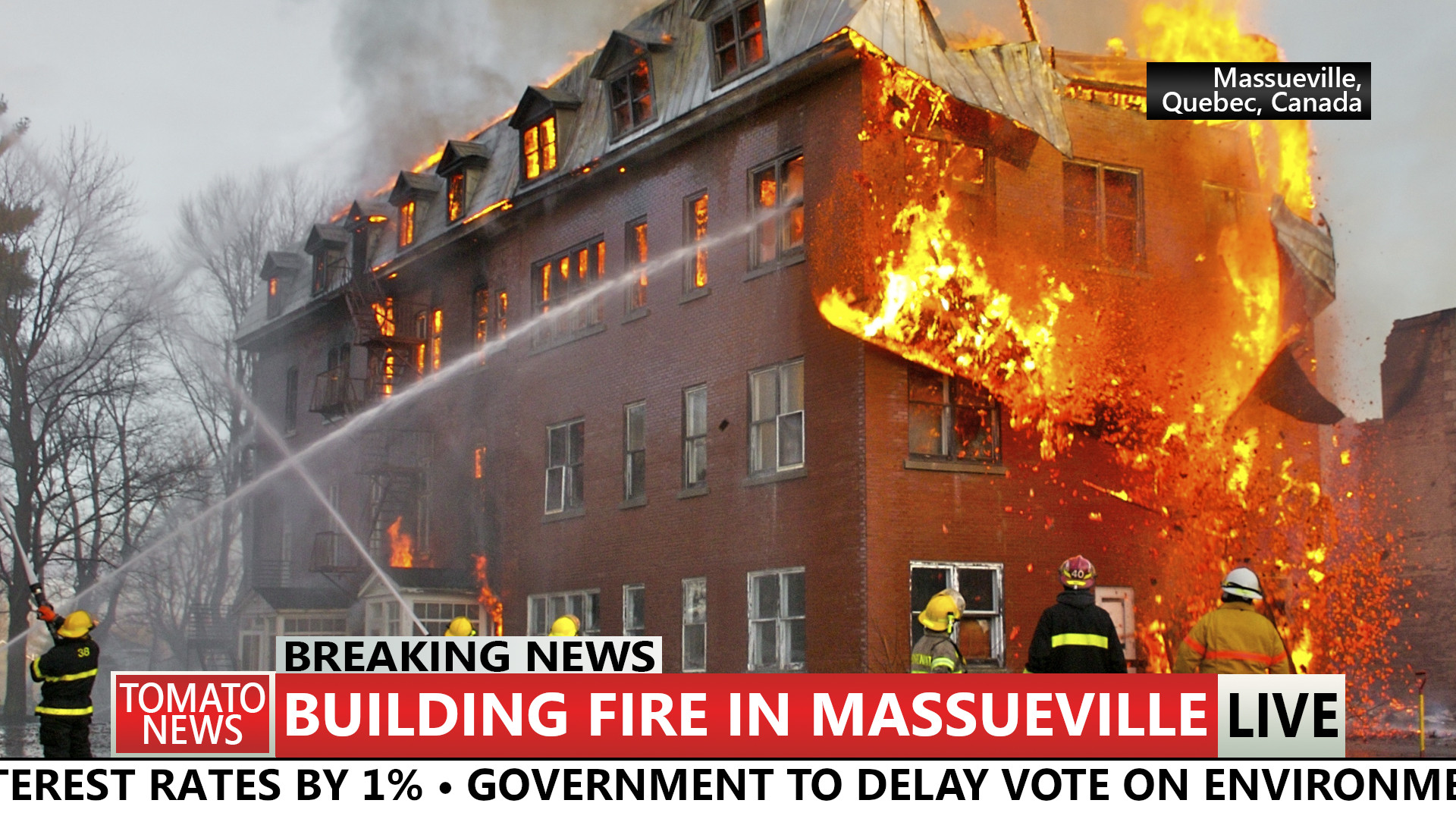Lower third on:
[Wikipedia]
[Google]
[Amazon]
In the television industry, a lower third is a graphic overlay placed in the title-safe lower area of the screen, though not necessarily the entire lower third of it, as the name suggests.
In its simplest form, a lower third can just be text overlaying the video. Frequently this text is white with a drop shadow to make the words easier to read. A lower third can also contain graphical elements such as boxes, images or shading. Some lower thirds have animated backgrounds and text.
Lower thirds can be created using basic home-
 Lower thirds are usually arranged in tiers, or lines:
* One-tier lower thirds: Usually used to identify a story that is being shown, or to show a presenter's name.
* Two-tier lower thirds: Used most often to identify a person on screen. Often, the person's name appears on the first line, with their place of residence or a description below that. Two-tier lower thirds may also be used as "locators" to identify where a story is taking place.
* Three-tier lower thirds: These lower thirds add more information. Commonly, the first tier is used to tell when the video was shot, if it was not shot the day the newscast is airing.
Lower thirds are usually arranged in tiers, or lines:
* One-tier lower thirds: Usually used to identify a story that is being shown, or to show a presenter's name.
* Two-tier lower thirds: Used most often to identify a person on screen. Often, the person's name appears on the first line, with their place of residence or a description below that. Two-tier lower thirds may also be used as "locators" to identify where a story is taking place.
* Three-tier lower thirds: These lower thirds add more information. Commonly, the first tier is used to tell when the video was shot, if it was not shot the day the newscast is airing.
video editing software
Video editing software or a video editor is software used for performing the post-production video editing of digital video sequences on a non-linear editing system (NLE). It has replaced traditional flatbed celluloid film editing tools and analo ...
or professional-level equipment. This equipment makes use of video's alpha channel
In computer graphics, alpha compositing or alpha blending is the process of combining one image with a background to create the appearance of partial or full transparency. It is often useful to render picture elements (pixels) in separate pass ...
to determine what parts of the graphic or text should be transparent, allowing the video in the background to show through.
Terminology
Lower thirds are also often known as "CG" (from character generator) or captions, and sometimes chyrons in North America, due to the popularity of Chyron Corporation's Chiron I character generator, an early digital solution developed in the 1970s for rendering lower thirds. Other common terms include superbars (or simply supers) (US) and name straps and astons (after Aston Electronic Designs) (UK). Video with lower thirds is known as a ''program as broadcast'' or ''dirty''. Video without lower thirds is known as a '' clean feed'' or ''textless''. For international distribution programs often include ''textless elements'' on the master tape: these are all the shots that lower thirds anddigital on-screen graphic
A digital on-screen graphic, digitally originated graphic (DOG, bug, network bug, or screenbug) is a watermark-like station logo that most television broadcasters overlay over a portion of the screen area of their programs to identify the channel ...
s have been applied to, placed end-to-end so engineers can make a clean master if necessary.
Tiers
 Lower thirds are usually arranged in tiers, or lines:
* One-tier lower thirds: Usually used to identify a story that is being shown, or to show a presenter's name.
* Two-tier lower thirds: Used most often to identify a person on screen. Often, the person's name appears on the first line, with their place of residence or a description below that. Two-tier lower thirds may also be used as "locators" to identify where a story is taking place.
* Three-tier lower thirds: These lower thirds add more information. Commonly, the first tier is used to tell when the video was shot, if it was not shot the day the newscast is airing.
Lower thirds are usually arranged in tiers, or lines:
* One-tier lower thirds: Usually used to identify a story that is being shown, or to show a presenter's name.
* Two-tier lower thirds: Used most often to identify a person on screen. Often, the person's name appears on the first line, with their place of residence or a description below that. Two-tier lower thirds may also be used as "locators" to identify where a story is taking place.
* Three-tier lower thirds: These lower thirds add more information. Commonly, the first tier is used to tell when the video was shot, if it was not shot the day the newscast is airing.
Further elements
Lower thirds increasingly include elements such as news tickers, time and date, weather information, stock quotes, or sports scores.See also
*Intertitle
In films and videos, an intertitle, also known as a title card, is a piece of filmed, printed text edited into the midst of (hence, ''inter-'') the photographed action at various points. Intertitles used to convey character dialogue are referred ...
* Television news screen layout
* Telop
References
{{Broadcasting Film and video technology Television news Television terminology